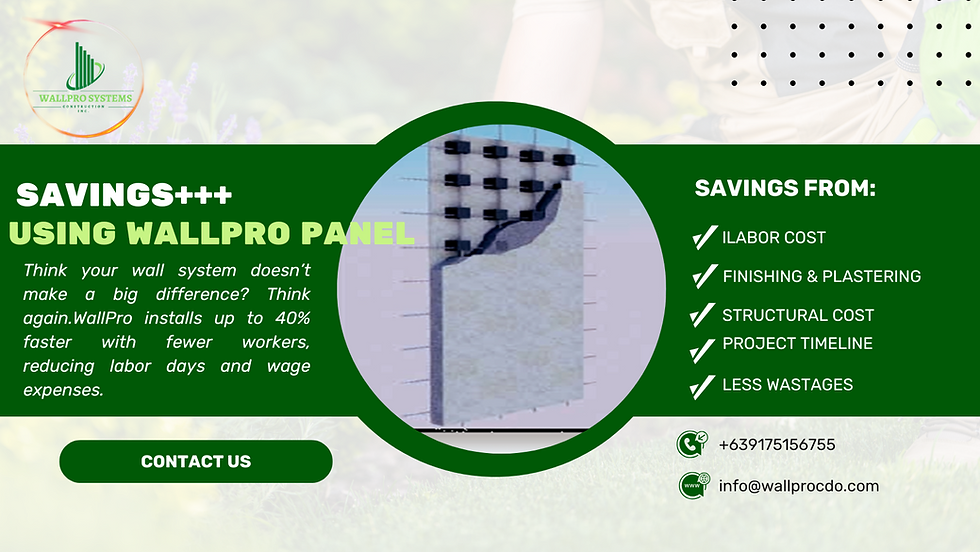Sustainable & Eco-Friendly Construction Trends in Residential Projects
- Gabriel Mikael
- Feb 13
- 2 min read
As global awareness of environmental issues continues to grow, the residential construction industry is rapidly evolving to meet the demand for sustainable and eco-friendly solutions. Homeowners, architects, and builders are increasingly prioritizing practices that reduce environmental impact while promoting energy efficiency and healthier living spaces. Here are the key trends currently shaping the future of sustainable residential construction:
1. Green Building Materials. The use of sustainable materials is fundamental in eco-friendly construction. Trends include:
Lightweight Concrete: Offers energy efficiency, durability, and reduced structural load, minimizing the need for excess materials.
Recycled and Reclaimed Materials: Incorporating recycled steel, reclaimed wood, and repurposed glass reduces waste and lowers carbon footprints.
Sustainable Wood Alternatives: Bamboo and engineered wood are renewable, durable, and eco-friendly options.
2. Net-Zero Energy Homes. Net-zero homes are designed to produce as much energy as they consume through:
Solar Power Systems: Increasingly affordable solar panels harness renewable energy.
Energy-Efficient Design: High-performance insulation, energy-efficient windows, and smart appliances reduce energy demand.
Battery Storage: Home energy storage systems ensure continuous power supply even during outages.
3. Water Conservation Technologies. As water scarcity becomes a global concern, sustainable homes feature:
Rainwater Harvesting Systems: Collect and store rainwater for irrigation and non-potable uses.
Greywater Recycling: Reuses water from sinks and showers for landscaping.
Water-Efficient Fixtures: Low-flow faucets, showerheads, and dual-flush toilets reduce water consumption.
4. Smart Home Integration. Technology plays a crucial role in enhancing home sustainability:
Energy Monitoring Systems: Track real-time energy usage to optimize consumption.
Smart Thermostats and Lighting: Automatically adjust settings to reduce waste.
Home Automation: Integrated systems manage HVAC, lighting, and security efficiently.
5. Passive House Design Principles.Passive design reduces energy consumption through:
Optimized Building Orientation: Maximizes natural light and ventilation.
Thermal Mass Materials: Maintain consistent indoor temperatures by absorbing and releasing heat.
Super-Insulation: Minimizes heat loss, reducing the need for artificial heating and cooling.
6. Modular and Prefabricated Construction.Prefabrication is gaining popularity for its sustainability benefits:
Reduced Waste: Controlled factory environments minimize material waste.
Energy-Efficient Manufacturing: Prefab components require less energy to produce.
Quick Assembly: Shortens construction timelines, reducing on-site environmental impact.
7. Eco-Friendly Landscaping.Sustainability extends beyond the home’s walls:
Native Plant Landscaping: Reduces water usage and maintenance needs.
Permeable Surfaces: Improve drainage and reduce runoff.
Green Roofs and Living Walls: Enhance insulation and biodiversity.
The future of residential construction lies in sustainable, eco-friendly practices. By embracing innovative materials, energy-efficient technologies, and smart design principles, the construction industry can significantly reduce its environmental impact. These trends not only promote a healthier planet but also create homes that are cost-effective, energy-efficient, and designed for future resilience.




Comments